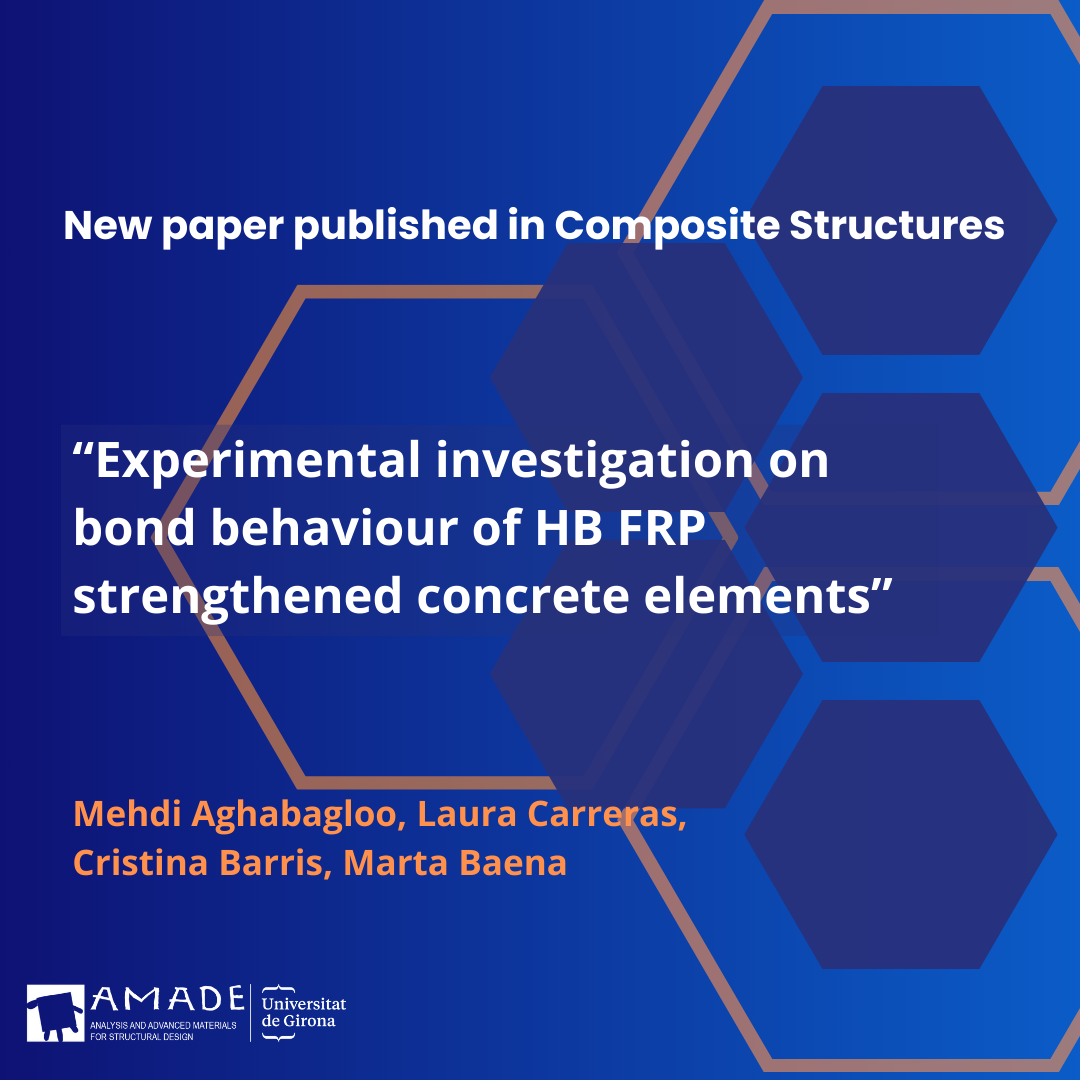
08 Abr New paper on bond behaviour of HB FRP-strengthened concrete elements
Researchers from AMADE (Mehdi Ahabagloo, Laura Carreras, Cristina Barris and Marta Baena) have published a new study in Composite Structures, titled:
«Experimental Investigation on Bond Behaviour of HB FRP-Strengthened Concrete Elements.»
This research explores how hybrid-bonded (HB) systems improve the anchoring of CFRP (Carbon Fiber Reinforced Polymer) to concrete, reducing the risk of premature debonding failure. By combining experimental and numerical approaches, the study establishes separate cohesive and friction stress-slip laws, demonstrating how their combined effect accurately models the system’s behavior.
The key findings of this publication are:
– Anchoring Plate Pressure & Debonding: As interlocks in the dense concrete aggregate separate, expansion at the concrete-adhesive interface increases external pressure on the anchoring plate, potentially leading to plate yielding.
– Anchor Plate Stiffness & Load-Bearing Capacity: Stiffer plates enhance anchoring efficiency by increasing the fracture energy, improving the system’s overall performance.
– Metallic Anchorage Design Considerations: Expansion-induced pressure under the plate must be accounted for in the design to prevent yielding and structural failure.
This study contributes to the understanding of hybrid-bonded reinforcement systems, offering insights for more efficient FRP-strengthened concrete structures.
You may find this study in open access here.
This study was supported by:
– Spanish Ministry of Science and Innovation (MCIN/ AEI) [Project Ref. PID2020-119015GB-C22];
– Generalitat de Catalunya co-funded by Banco Santander [grant number IFUdG 2021/01];
– L.C. acknowledges the grant RYC2021-032171-I funded by MCIN/AEI/10.13039/501100011033 and by “European Union NextGenerationEU/PRTR.
The authors also wish to acknowledge the support of S&P Clever Reinforcement Ibérica Lda for supplying the laminates and the epoxy adhesive used in this study.



